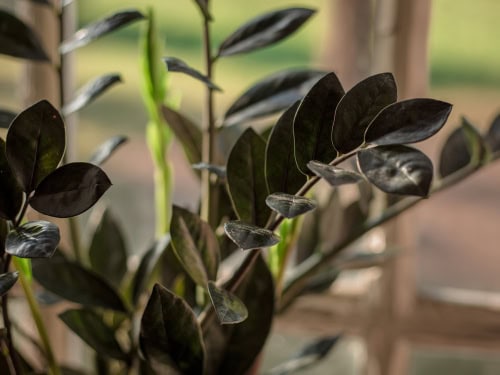Raven ZZ plants are a popular choice for indoor gardening enthusiasts due to their striking appearance and low maintenance requirements. However, it can be concerning when the leaves of your Raven ZZ plant begin to turn brown.
This may indicate a problem with the plant’s health and should be addressed promptly to prevent further damage.
Understanding the causes of Raven ZZ plant leaves turning brown is crucial to properly caring for your plant. Brown leaves can be caused by a variety of factors, including improper watering, lack of humidity, and insufficient lighting.
Additionally, pests and diseases can also contribute to the browning of leaves. By identifying the cause of the problem, you can take the necessary steps to remedy it and ensure the continued health of your Raven ZZ plant.
Key Takeaways on Raven ZZ Plant Leaves Turning Brown
- Brown leaves on Raven ZZ plants can indicate a problem with the plant’s health.
- Improper watering, lack of humidity, insufficient lighting, pests, and diseases can all contribute to the browning of leaves.
- Identifying the cause of the problem is crucial to properly caring for your Raven ZZ plant and ensuring its continued health.
Also don’t miss:
- Pygmy Date Palm Turning Brown
- Why Is My Pink Quill Turning Brown?
- Why Is My Pink Princess Turning Brown?
Understanding ZZ Plant Leaves Turning Brown
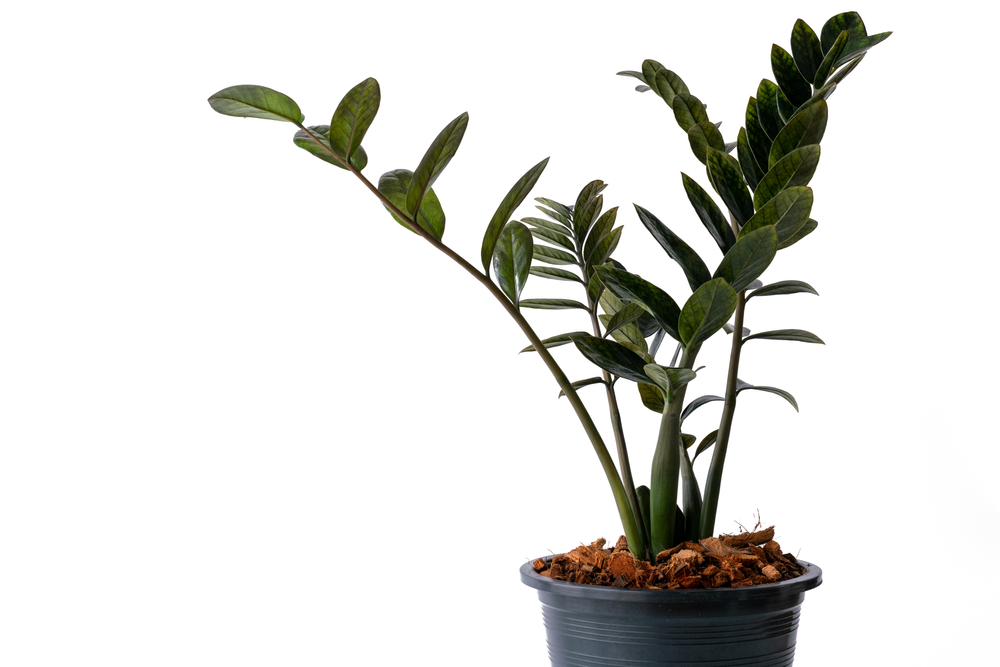
Raven ZZ plants are popular houseplants that are known for their striking appearance and low maintenance. However, sometimes the leaves of the ZZ plant can turn brown, which can be a cause for concern for plant owners.
In this section, we will explore some of the common reasons why ZZ plant leaves turn brown and what can be done to fix the issue.
Overwatering and Underwatering
Overwatering and underwatering are two of the most common reasons why ZZ plant leaves turn brown. Overwatering can cause the roots to rot, leading to a lack of nutrients and water uptake, which can cause the leaves to turn brown. On the other hand, underwatering can cause the leaves to dry out and turn brown.
To fix the issue of overwatering, it is important to ensure that the plant is not sitting in water and that the soil is allowed to dry out between watering sessions. To fix the issue of underwatering, it is important to water the plant thoroughly and ensure that the soil is kept moist.
Sunburn and Heat Damage
ZZ plants thrive in bright, indirect light. However, exposure to direct sunlight can cause the leaves to burn and turn brown. Additionally, exposure to heat sources such as radiators or air conditioning vents can also cause the leaves to dry out and turn brown.
To fix the issue of sunburn and heat damage, it is important to move the plant to a location with less direct sunlight and away from heat sources. It is also important to ensure that the plant is not placed near drafty windows or doors.
Pests and Diseases
Pests and diseases can also cause ZZ plant leaves to turn brown. Common pests that can affect ZZ plants include spider mites and mealybugs. These pests can cause the leaves to turn brown and become distorted.
To fix the issue of pests, it is important to regularly inspect the plant for signs of infestation and treat the plant with an appropriate insecticide.
Additionally, ZZ plants can be susceptible to fungal diseases, which can also cause the leaves to turn brown. To prevent fungal diseases, it is important to ensure that the plant is not overwatered and that the soil is allowed to dry out between watering sessions.
Proper Care for ZZ Plants
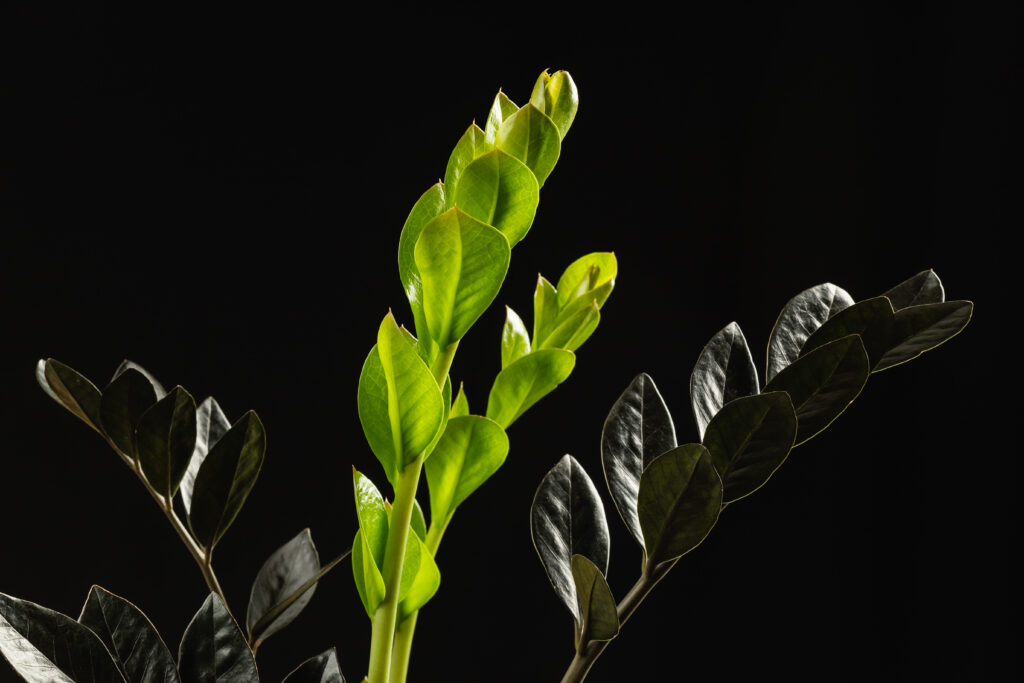
ZZ plants are low-maintenance houseplants that can thrive in a variety of growing conditions. However, to prevent raven ZZ plant leaves from turning brown, proper care is essential.
1. Watering
ZZ plants have thick rhizomes that store water, making them drought-tolerant. Overwatering can lead to root rot, which can quickly kill a ZZ plant. To prevent overwatering, allow the soil to dry out thoroughly between waterings.
ZZ plants prefer well-draining soil and containers with drainage holes to prevent waterlogged soil. It’s also essential to use the right pot size to avoid watering issues.
2. Light
ZZ plants can tolerate low light conditions, but they prefer indirect light. Direct sunlight can scorch the leaves, causing them to turn brown. Place the ZZ plant near a north or east-facing window, or provide artificial light if necessary.
3. Humidity and Temperature
ZZ plants can tolerate a wide range of humidity and temperature levels. They can thrive in average indoor humidity levels, but they prefer temperatures between 60-75°F (15-24°C). Avoid exposing ZZ plants to extreme temperatures and drafts.
4. Fertilizing
ZZ plants do not require frequent fertilization, but occasional feeding can promote growth and keep the leaves green. Use a balanced, water-soluble fertilizer during the growing season, following the package instructions carefully.
5. Pruning and Repotting
ZZ plants rarely require pruning, but removing yellow or brown leaves can improve the plant’s appearance. Repot ZZ plants every two to three years, or when the roots outgrow the container. Use well-draining soil and a pot with drainage holes to prevent waterlogging.
6. Humidity and Drainage
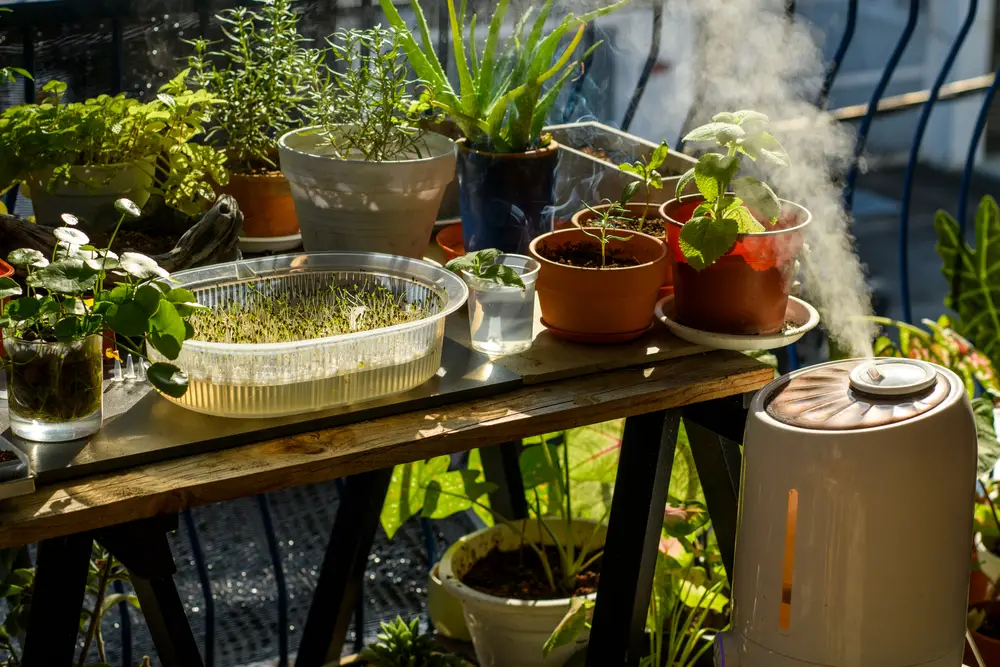
ZZ plants prefer well-draining soil and containers with drainage holes to prevent waterlogged soil. If the air in your home is dry, consider using a humidifier or placing a tray of water near the plant to increase humidity levels..
Diagnosing and Treating Common ZZ Plant Problems
Raven ZZ plants are generally easy to care for, but they can still experience a few problems. Here are some common ZZ plant problems that you may encounter and how to treat them.
1. Overwatering and Root Rot
Overwatering can lead to root rot, which can cause the leaves to droop and turn yellow. To fix this problem, the plant should be repotted in fresh soil and the watering schedule should be adjusted. ZZ plants prefer to dry out slightly between waterings, so make sure the soil is dry to the touch before watering.
2. Nutrient Deficiency
ZZ plants can suffer from nutrient deficiencies if they are not fertilized regularly. Symptoms of nutrient deficiency include yellowing leaves and stunted growth. To fix this problem, fertilize the plant with a balanced fertilizer every two to three months during the growing season.
3. Pests
ZZ plants are generally resistant to pests, but they can occasionally suffer from infestations of mealybugs, spider mites, or scale insects. To treat these pests, use a solution of rubbing alcohol and water to wipe down the leaves. If the infestation is severe, you may need to use an insecticidal soap.
4. Dehydration
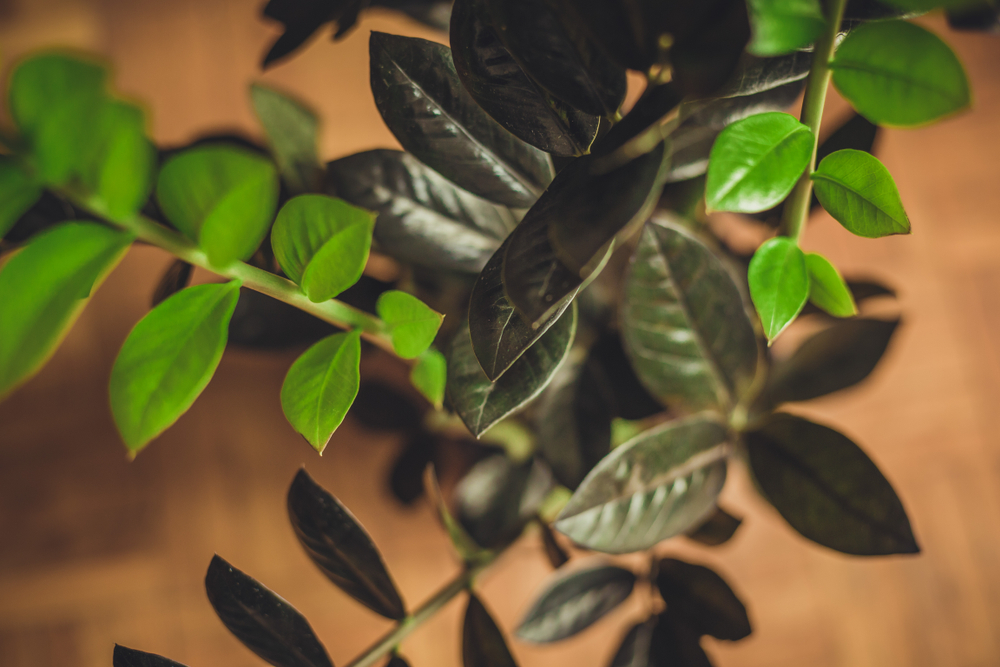
ZZ plants can become dehydrated if they are not watered regularly or if they are exposed to dry air. Symptoms of dehydration include crispy leaves and brown tips. To fix this problem, increase the humidity around the plant by misting it regularly or placing a tray of water nearby.
5. Chlorine, Fluoride, and Salt Buildup
ZZ plants are sensitive to chlorine, fluoride, and salt, which can build up in the soil over time. Symptoms of buildup include yellowing leaves and crispy edges. To fix this problem, water the plant with distilled or filtered water, or allow tap water to sit out overnight before using it to water the plant.
6. Pruning
Pruning can help ZZ plants stay healthy and promote new growth. Use pruning shears to remove any dead or damaged leaves, or to trim back any leggy stems. Be sure to sterilize the pruning shears with rubbing alcohol before using them to prevent the spread of disease.
Propagation and Growth of ZZ Plants
ZZ plants are hardy plants that can be propagated in three different ways: stem cuttings, division, and leaf cuttings. Propagation is a simple and rewarding process that allows you to expand your houseplant collection or share the plant love with friends and family.
ZZ plants are rhizomatous, which means they grow from underground stems called rhizomes. These rhizomes store water and nutrients, which makes ZZ plants resistant to drought and forgetful owners but also makes them susceptible to overwatering.
The growing season for ZZ plants is from spring to fall. During this time, they prefer bright, indirect light and temperatures between 65-75°F. Raven ZZ plants, with their dark green leaves, are no exception. However, if the leaves start to turn a pale green color or yellow, it could be a sign of overwatering or underwatering.
To avoid overwatering, ZZ plants should be allowed to dry out completely between waterings. ZZ plants are also susceptible to evaporation and transpiration, which is why they should be kept away from workplaces and ultraviolet rays.
If you want to propagate ZZ plants using stem cuttings, it’s best to take cuttings in the spring or summer. The cuttings should be at least 3 inches long and have a few leaves. Once you have taken the cuttings, dip the ends in rooting hormone and plant them in a well-draining potting mix.
If you want to propagate ZZ plants using division, wait until the plant has outgrown its container and has multiple rhizomes. Carefully remove the plant from its container and separate the rhizomes. Plant each rhizome in a separate pot with fresh potting mix.
Finally, if you want to propagate ZZ plants using leaf cuttings, select a healthy leaf and cut it into several pieces. Allow the cuttings to dry out for a few hours before planting them in a well-draining potting mix.
If you’re growing ZZ plants indoors, make sure they have access to bright, indirect light. If natural light is limited, consider using grow lights to supplement. ZZ plants are also able to tolerate low light conditions, but they will not grow as quickly.
Toxicity and Safety Measures for ZZ Plants
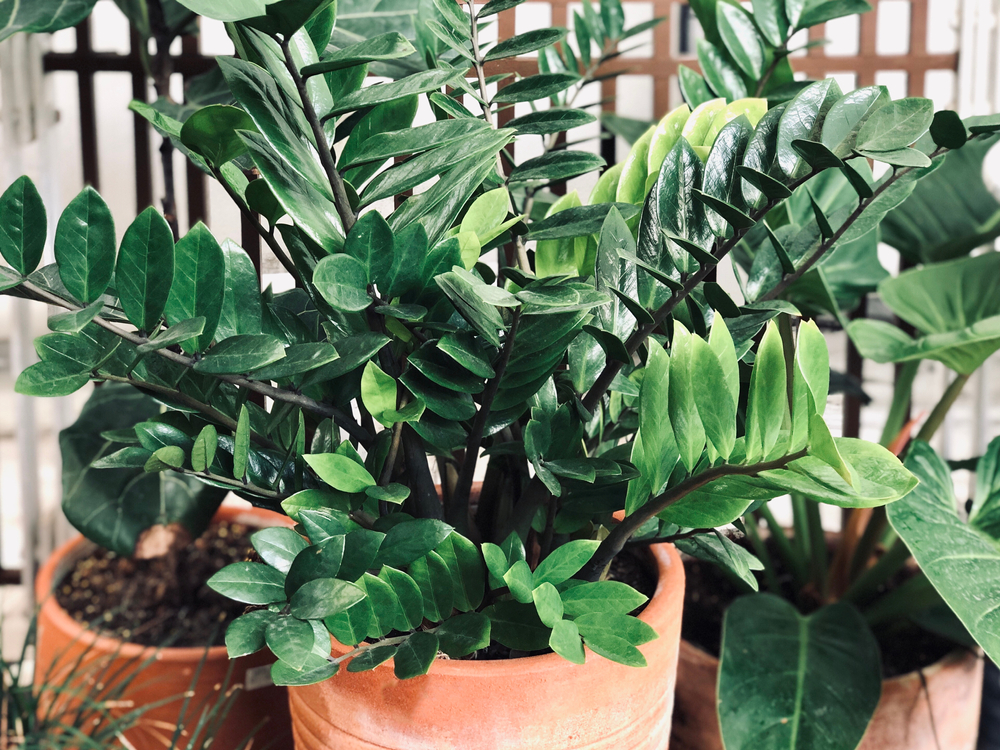
ZZ plants are considered to be mildly toxic to both humans and pets, including dogs and cats. The plant contains calcium oxalate crystals, which can cause irritation and discomfort if ingested or if the sap comes into contact with the skin or eyes.
Symptoms of ZZ plant toxicity include swelling, redness, and itching of the affected area. Ingesting the plant can cause nausea, vomiting, and diarrhea. In rare cases, ZZ plant toxicity can lead to more severe symptoms such as difficulty breathing or swallowing.
To prevent ZZ plant toxicity, it is recommended to keep the plant out of reach of children and pets. If you have pets that like to chew on plants, it may be best to avoid keeping ZZ plants in your home altogether.
If you do keep ZZ plants in your home, it is important to practice good safety measures. This includes wearing gloves when handling the plant and washing your hands thoroughly after touching it. If you accidentally ingest ZZ plant sap or get it in your eyes, rinse the affected area with water immediately and seek medical attention if necessary.
In summary, while ZZ plants are generally considered to be safe and easy to care for, it is important to be aware of their potential toxicity and take appropriate safety measures to prevent any accidental ingestion or contact with the sap.
Conclusion
Raven ZZ plants turning brown can be caused by several factors, including overwatering, poor water quality, and sunburn. It is important to identify the root cause of the issue to take the appropriate measures to revive the plant’s health.
Proper watering techniques are essential to the well-being of Raven ZZ plants. Overwatering can lead to root rot, which causes the leaves to turn brown and wilt.
It is recommended to allow the top inch of soil to dry out before watering again. Additionally, it is important to ensure proper drainage and avoid leaving the plant in standing water.
Water quality can also affect the health of Raven ZZ plants. Tap water contains minerals and salts that can build up in the soil, causing the tips of the leaves to burn and turn brown. Using a water filtration system or distilled water can help prevent this issue.
Sunburn can also cause Raven ZZ plant leaves to turn brown. These plants prefer indirect sunlight, and exposure to direct sunlight can cause the leaves to become scorched and brown. It is recommended to place the plant in a location with bright, indirect light.
Frequently Asked Questions
What causes brown leaves on Raven ZZ plants?
Brown leaves on Raven ZZ plants can be caused by a variety of factors, including overwatering, underwatering, low humidity, lack of light, or exposure to cold temperatures.
It can also be caused by pests or diseases. It is important to identify the underlying cause of the brown leaves to properly treat the issue.
How do you treat brown leaves on a Raven ZZ plant?
To treat brown leaves on a Raven ZZ plant, first identify the underlying cause. If the cause is overwatering, reduce the amount of water the plant receives and ensure proper drainage. If the cause is underwatering, increase the frequency of watering and ensure the plant is receiving enough water.
If the cause is low humidity, increase the humidity levels around the plant. If the cause is lack of light, move the plant to a brighter location. If the cause is pests or diseases, treat the plant with an appropriate pesticide or fungicide.
Are spider mites a common issue for Raven ZZ plants?
Spider mites can be a common issue for Raven ZZ plants. These pests are small and difficult to see, but they can cause significant damage to the plant by sucking the sap from the leaves.
Signs of spider mites include tiny webs on the plant and yellow or brown spots on the leaves. To treat spider mites, use a pesticide specifically designed to target these pests.
What are some common pests that affect Raven ZZ plants?
In addition to spider mites, other common pests that can affect Raven ZZ plants include mealybugs, scale insects, and thrips. These pests can cause damage to the leaves and stems of the plant, and can also spread diseases. To treat these pests, use an appropriate pesticide or insecticidal soap.
How often should you water a Raven ZZ plant?
Raven ZZ plants should be watered when the top inch of soil feels dry to the touch. It is important not to overwater the plant, as this can lead to root rot and other issues. Ensure proper drainage and do not allow the plant to sit in standing water.
How do you revive a dying Raven ZZ plant?
To revive a dying Raven ZZ plant, first identify the underlying cause of the issue. If the cause is overwatering, reduce the amount of water the plant receives and ensure proper drainage. If the cause is underwatering, increase the frequency of watering and ensure the plant is receiving enough water.
If the cause is low humidity, increase the humidity levels around the plant. If the cause is lack of light, move the plant to a brighter location. If the cause is pests or diseases, treat the plant with an appropriate pesticide or fungicide.

Hey, I’m Lisa and I’ve been an avid gardener for over 30 years. I love writing, talking and living in the garden! Feel free to connect with me on my socials below

